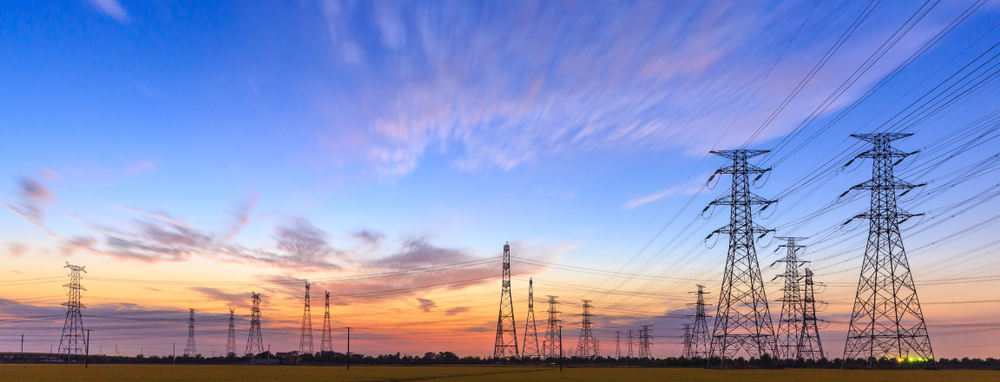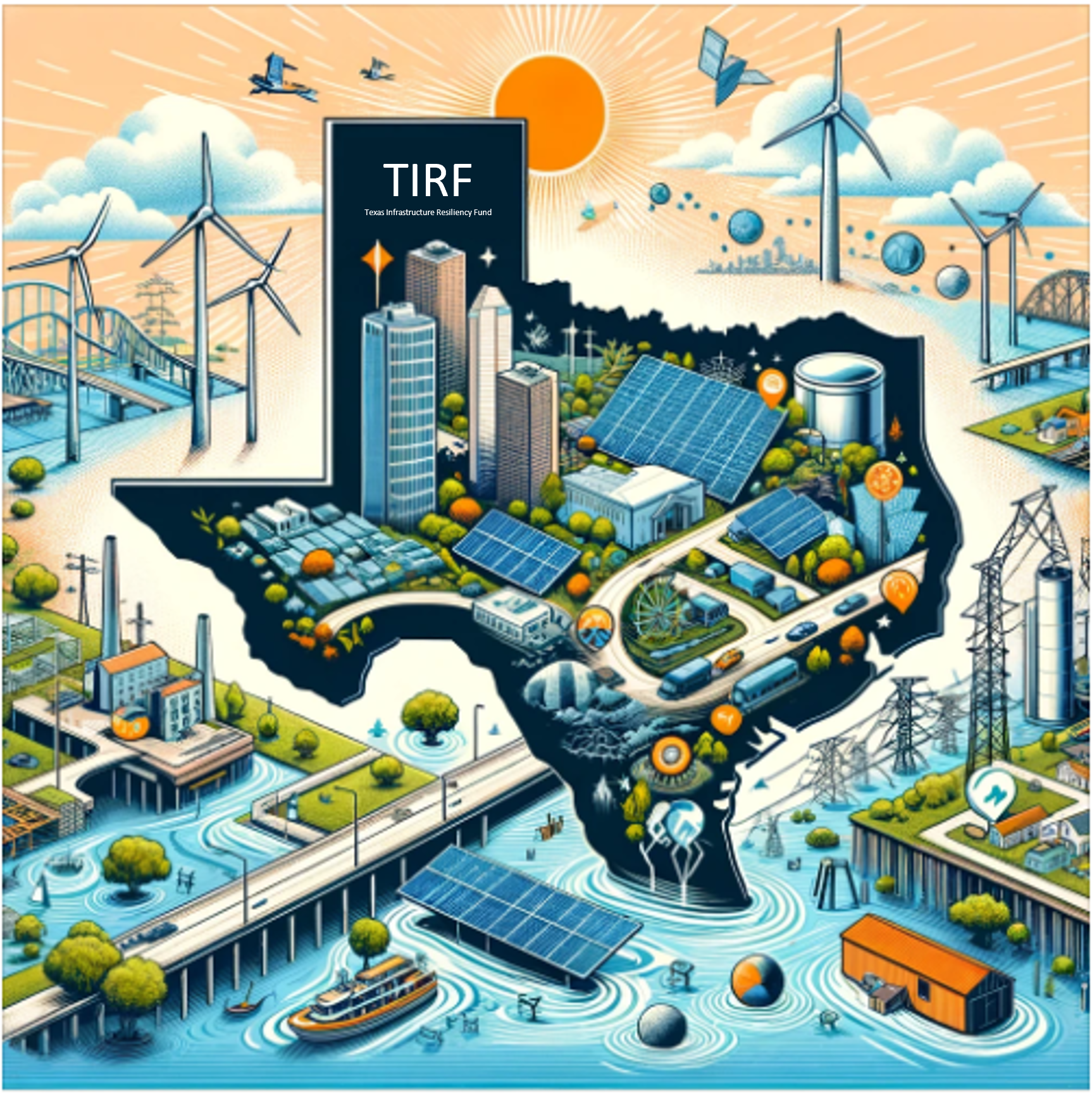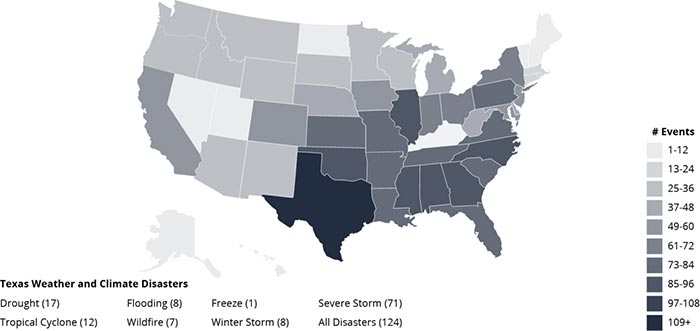The Ongoing Power Grid Crisis in Texas

As extreme weather events threaten power outages, facilities in Texas are installing microgrids to reduce dependence on the utility. On-site generation provides reliable power to keep sites operating.
In the summer of 2023, the Texas power grid operator entered emergency operations for the first time since Winter Storm Uri in 2021. During the level 2 emergency alert, just under 2,300 MW were available in the Electric Reliability Council of Texas (ERCOT) operating reserves — enough to avoid the risk of rotating outages, but requiring end users to conserve power.
Texas facilities are increasingly reconsidering their dependence on utility power as severe weather events, from heat waves to winter storms, continue to leave millions of homes and businesses vulnerable, including hospitals, hotels, and industrial plants.
Texas Facilities Face Ongoing Power Outages
In summer, extreme heat leaves the state vulnerable to outages. ERCOT, which manages 90% of the state’s electricity load, reported that the demand for electricity amid extreme heat set 10 new all-time peak demand records in the summer of 2023.
Winter also poses risks. In 2021, Winter Storm Uri left four million homes and businesses without power for days. Texas previously faced outages due to cold weather in 2011 and in at least eight other instances since the 1990s. ERCOT is predicting further risk in the winter of 2023 due to the high usage of generating resources during this summer’s record demand.
Despite these recurring patterns, state and utility regulators have not taken enough action to address it and are unlikely to do so quickly and meaningfully. It is also unlikely that Texas regulators will make substantive changes that would prevent these types of crises in the future.
Any changes that do occur will ultimately increase electricity costs for Texas customers. For example, merging the grid with the other U.S. grids could exceed $1 million per mile of transmission lines, increasing transmission and distribution (T&D) charges for facilities reliant on the grid.
Power frequency is an issue today and on a recurring basis as ERCOT attempts to balance resources across the state. But Texas facilities do not have to wait for a regulatory solution. Texas facilities can take control of their energy by deploying microgrids for energy independence.
Solution: Microgrids and Energy as a Service (EaaS)
Microgrids offer a way to operate independently from the grid during outages. Combined heat and power (CHP) or cogeneration microgrids generate both electric and thermal energy for the facility. They typically run in parallel with the utility, but when a utility outage occurs, the CHP system enters into island mode and runs independently of the grid, insulating the facility from extended outages as well as the “dirty power” that usually accompanies them and can damage equipment. Using natural gas, the facility can remain in island mode for as long as the outage lasts. The CHP system is designed to withstand temperature extremes, so weather is not a factor.
Unison Energy offers an Energy as a Service (EaaS) solution to pay for the microgrid. In this model, Unison installs, owns, and operates the microgrid under a long-term contract with no upfront capital from the facility. The facility only pays for the energy used by the site.
1980-2020 Billion-Dollar Weather and Climate Disasters (CPI-Adjusted)
Save on Energy Costs
Microgrids are less expensive to operate than purchasing power from the utility, and the Inflation Reduction Act (IRA) gives a 30% tax credit to enterprises that invest in this technology. Furthermore, they offer cost control in the face of utility pricing variability. The Texas billing spikes left some customers with charges up to 70x higher than average, with wholesale prices up 300%. Facilities that avoided these costs may not be off the hook yet: as utility retailers default, the cost will likely end up on customers’ bills. An EaaS solution can protect customers from price variability, as well as long-term increases in electricity costs due to grid upgrades.
Continue to Serve Your Community
Microgrids allow hospitals, hotels, airports, and other critical facilities to serve their communities precisely when they are most needed. And because microgrids are able to take large facilities off the grid, they can alleviate the load on the grid at a time when regulators need end users to decrease energy usage.
Texas Leads in Energy Independence
Texas already leads the country in early adoption and use of CHP — 126 Texas sites have over 17,000 MW capacity total. While much of this capacity has served large refineries, market developments have opened CHP to a wider range of commercial and industrial sites.
Compared to policy changes, microgrids offer a relatively quick and ultimately more effective way to ensure resilient energy, not just today but for the next 15-20 years, while simultaneously achieving cost savings and reducing carbon. Texas facilities can start enjoying the benefits of microgrids quickly, and rest easy that they will have resilient power for years to come.
If your Texas site could benefit from the resiliency, cost savings, and emissions reductions of a CHP microgrid, get in touch to learn more.
Energy insights, delivered
Subscribe for more content.
Related Blogs

The Texas Infrastructure Resiliency Fund: Empowering Businesses with Onsite Microgrids
Deadlines for the Inflation Reduction Act
Microgrids and Their Role in the Energy Transition
